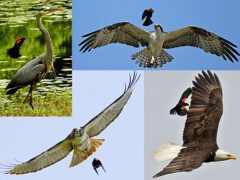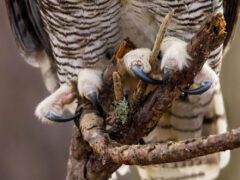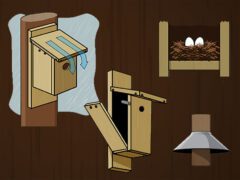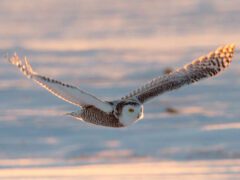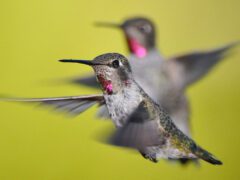American White Pelican Similar Species Comparison
Main SpeciesAmerican White Pelican
Breeding adult
Huge snow-white waterbird with a long neck, and a massive bill. A yellow plate forms on the upper bill of breeding adults.
© Gerrit Vyn / Macaulay LibraryOregon, April 26, 2019Breeding adult
Huge snow-white waterbird with a long neck, and a massive bill. A yellow plate forms on the upper bill of breeding adults.
© Alix d'Entremont / Macaulay LibraryNova Scotia, June 15, 2013Breeding adults
Often occurs in flocks. The vertical plate near the tip of the bill indicates breeding individuals. All white when on the ground, but note black flight feathers when wing is spread.
© Timothy Barksdale / Macaulay LibraryTexas, March 04, 1997Nonbreeding adult
Large waterbird with a long yellow bill with an extendable pouch used to scoop fish out of the water.
© Gordon Dimmig / Macaulay LibraryIllinois, August 01, 2014Breeding adult
Large but graceful flyer with black flight feathers and a white body.
© Marky Mutchler / Macaulay LibraryMissouri, March 28, 2020Breeding adult
Soars gracefully on very broad, stable wings. Often soars using thermals.
© Daniel Jauvin / Macaulay LibraryQuebec, July 22, 2019Flock
Often travels and forages in large flocks, sometimes traveling long distances in V-formations.
© Jason Newton / Macaulay LibraryIllinois, February 28, 2017Flock
Frequently seen in groups whether it be loafing, migrating, or foraging.
© maxine reid / Macaulay LibraryWashington, June 08, 2017Habitat
Typically breeds on islands in shallow wetlands in the interior of the continent. They spend winters on coastal waters, bays, and estuaries.
© Arielle DeMerchant / Macaulay LibraryAlberta, June 25, 2017Similar SpeciesBrown Pelican
Breeding adult (Pacific)
Brown Pelicans are considerably smaller than American White Pelicans, and their plumage is all dark, without the American White Pelican’s contrast between gleaming white and jet black.
© Grace Oliver / Macaulay LibraryWashington, May 17, 2017Similar SpeciesWood Stork
Adult
Wood Storks fly their long legs trailing behind them, unlike the short-legged pelican. The black trailing edge of the wing comes all the way to the body in Wood Storks, whereas American White Pelicans have a white gap on the wing (the tertials) before the black trailing edge begins.
© Gates Dupont / Macaulay LibraryFlorida, April 06, 2017Similar SpeciesWhooping Crane
Adult
Whooping Cranes are very rare and limited in range. Their long necks, small heads, and long legs are usually visible in flight, which sets them apart from American White Pelicans.
© Jay McGowan / Macaulay LibraryTexas, March 21, 2010Similar SpeciesWhite Ibis
Adult
The black on the wings of adult White Ibis is restricted to the very outer primaries unlike the all black primaries of American White Pelicans. They also fly with quicker and snappier wingbeats.
© Tony Leukering / Macaulay LibraryFlorida, March 04, 2017Similar SpeciesSnow Goose
Adult white morph
Snow Geese fly with their necks extended and they flap their wings nearly continuously instead of soaring like American White Pelicans. Snow Geese are also smaller than American White Pelicans.
© Kevin Faccenda / Macaulay LibraryPennsylvania, March 05, 2017Compare with Similar Species
Click on an image to compare
Species in This Family
Pelicans(Order: Pelecaniformes, Family: Pelecanidae)
More to Read
Don't miss a thing! Join our email list
The Cornell Lab will send you updates about birds,
birding, and opportunities to help bird conservation.





